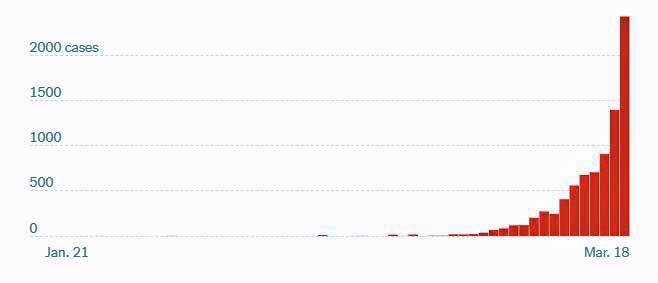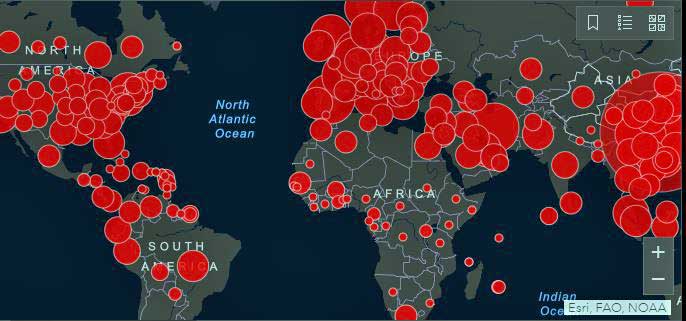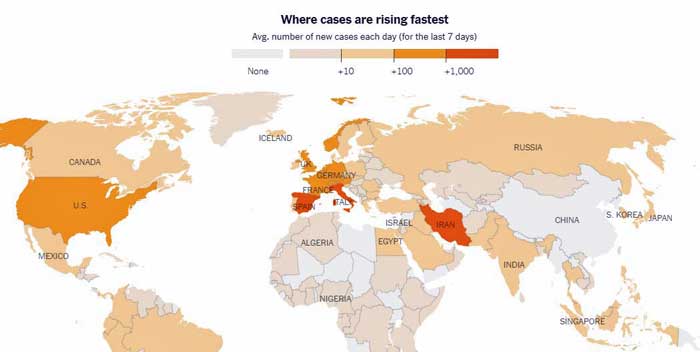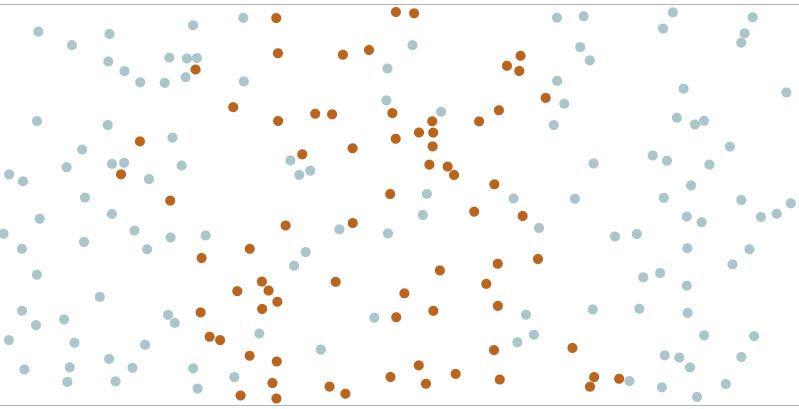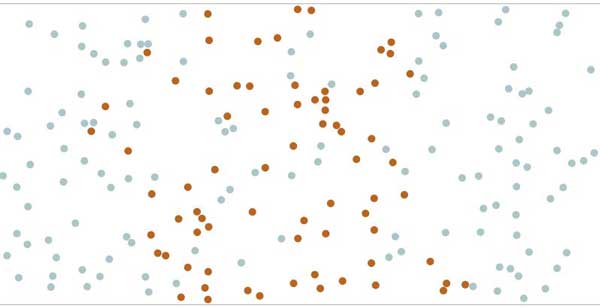Keeping Track
The number of models, maps and cool tracking sites is amazing – and a testament to how helpful it is to be in the digital age during a crisis like this.
Numerous sites offer ways to keep track of what’s going on. If you’re in the United States, I’ve found the New York Times Interactive map to be the easiest to get – like a punch in the gut right now – how rapidly the infection (or at least the confirmed cases) are rising. (Other countries are available, as well.)
Cases
- Find the Number of Cases in Your County
Worldwide Cases
Check out the Johns Hopkins Worldwide map to get a global picture of the virus’s spread. (It’s getting redder and redder). You can click on a country on the left and then click on the states or provinces that you live in. Or, for a simpler look, check out the Worldometer page.
Hot Spots and Not-so-Hot Spots
Check out where the number of cases are spreading fastest in this New York Times Global Map. (Because you must test in order to confirm a case, and countries vary in how much testing they are doing, this number may be different from how quickly the virus is actually spreading.)
When Will Your Area Peak (and is it prepared?)
Check out when the IHME predicts a peak in deaths will occur in your area and how well your area hospitals are prepared.
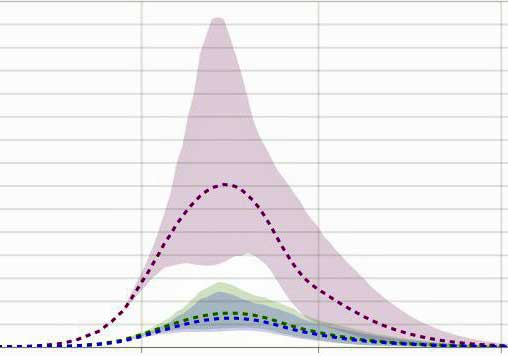
The IHME models predict the peak outbreak times for countries, states and provinces across the world
STAT News Coronavirus Case Increase Tracker
Are the confirmed cases in your area going up or down? Check out the Stat News COVID-19 tracker to find out.
Testing
Testing is, of course, critical to getting the pandemic under control. If we can quickly identify infected people and their contacts, we can isolate them and stop the virus from spreading.
- The COVID Tracking Project is doing great work showing the number of tests taken, the number of positives, negatives, etc. daily for the U.S.
The Death Toll
If you feel brave, check out deaths per country, the death toll over time, and the death rate according to age, on Worldometer
Play with the Models
Various models have been put forth which attempt to describe the coronavirus’s impact depending on the rigorousness of the social distancing measures employed.
The New York Times one is one of the best.
Why This is Happening
There’s nothing like a visual aid to give you a dose of reality. Check out these Washington Post simulations which demonstrate why the virus was always going to get to wherever you are, why travel bans work less and less over time, and why social distancing will play a critical role in the impact this virus has.
Viral Spread and Mutation Rate
Nextstrain has great maps on how the virus has spread through the world and how it is mutating. You can play with the timeline to watch it spread (scroll down to the 2nd map “Transmissions”)…
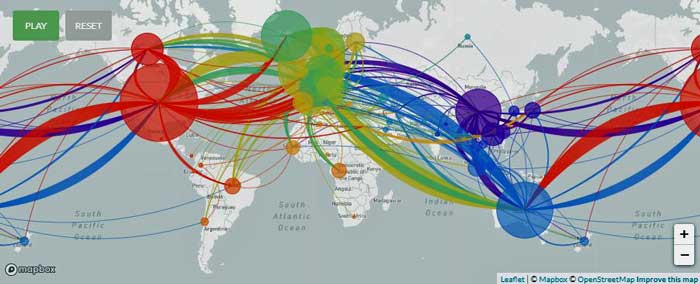
On the Nextstrain site you can jiggle the bar on the left to show how the virus has spread over time.
How the Virus Got Out
Check out this cool model that analyzed the movements of hundreds of millions of people to show how the virus emerged from Wuhan City into China, and into the U.S. and other countries.
Coronavirus Central – Resources From Health Rising
- Tracking – check out the multiplicity of ways the virus is being tracked: its spread, its infectious rate, the deaths it’s causing, efforts to model its effects.
- Advice From ME/CFS/FM Doctors and Researchers – ME/CFS/FM doctors and researchers give advice.
- Staying Safe – how to stay safe including: hand washing, nasal irrigation, disinfecting, making a mask, plus – is the virus being aerosolized? How long is the virus alive on different surfaces, and does the amount of virus present matter?
- Treatments – Check out the astonishing number of COVID-19 treatment trials underway.
- Apps – be part of the solution; use apps that help us understand the spread of the virus; plus, use apps that can warn you if you’ve been in contact with someone who is infected.


